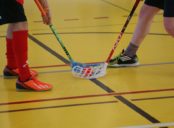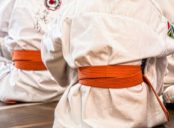Paralympics Curling: The Inclusive Sport on Ice

Introduction:
Paralympics Curling is an exciting and inclusive sport that offers athletes with physical disabilities the opportunity to compete at the highest level. In this article, we will provide a comprehensive overview of Paralympics Curling, exploring its various types, popularity, and the unique characteristics that distinguish it from other sports. We will also delve into the historical context of the pros and cons associated with different approaches to Paralympics Curling. So, let’s dive into the fascinating world of Paralympics Curling!
Understanding Paralympics Curling

Paralympics Curling is a sport designed for athletes with physical disabilities, allowing them to participate in a thrilling and strategic winter sport. Played on ice, it combines elements of precision, teamwork, and strategy, making it a captivating spectacle.
Types of Paralympics Curling
There are two primary types of Paralympics Curling: wheelchair curling and standing stick curling.
1. Wheelchair Curling:
Wheelchair curling is the most popular discipline in Paralympics Curling. Athletes with physical disabilities use specially designed wheelchairs fitted with extended handles for sweeping the ice. This type of curling mirrors traditional able-bodied curling, with teams of four players competing against each other to land their stones closest to the target.
2. Standing Stick Curling:
Standing stick curling is tailored for athletes who have difficulty with mobility but can stand using assistive devices or balance aids. This type of curling involves using a delivery stick to propel the stone towards the target. The stone is released from the stick, providing a different technique and approach compared to wheelchair curling.
Popularity and Growth of Paralympics Curling
Paralympics Curling has gained significant popularity over the years, fueled by inclusive initiatives and increased accessibility for athletes. Its growth can be attributed to several factors:
1. Inclusivity: Paralympics Curling provides individuals with disabilities an opportunity to engage in a challenging and competitive sport, exhibiting their skills on an international stage.
2. International Competitions: The Paralympics Games feature curling as one of the key events, garnering attention from a global audience. This exposure has contributed to the increased interest and popularity of the sport.
3. Adaptive Equipment: Advancements in adaptive equipment, such as specialized wheelchairs and delivery sticks, have made Paralympics Curling more accessible for athletes with physical disabilities.
Quantitative Measurements in Paralympics Curling
Quantitative measurements play an essential role in evaluating performance and enhancing the competitiveness of Paralympics Curling. Here are some key metrics used in the sport:
1. Stone Delivery Speed: The speed at which a stone is thrown significantly impacts its trajectory and effectiveness. Athletes aim to achieve consistent delivery speed to control the stone’s movement on the ice.
2. Sweep Technique and Force: Sweeping the ice in front of the stone alters its path by reducing friction. Athletes strive to apply the optimal sweep technique and force to guide the stone towards its intended target.
3. Accuracy of Shot Placement: The ability to consistently place stones in strategic positions requires precision and skill. Athletes must analyze the playing surface, anticipate the stone’s trajectory, and execute shots accurately.
Differentiating Factors in Paralympics Curling
Paralympics Curling differentiates itself from other sports in several ways, providing unique challenges and adaptations:
1. Adaptive Equipment: The use of specialized equipment tailored to the athletes’ needs, such as wheelchairs or delivery sticks, distinguishes Paralympics Curling from its able-bodied counterpart.
2. Sweeping Techniques: The sweeping techniques employed in Paralympics Curling differ from those used in traditional curling due to the specific physical capabilities of the athletes. These adaptations further highlight the inclusive nature of the sport.
3. Strategy Adjustments: Paralympics Curling requires teams to adapt strategies based on the abilities of individual players. This necessitates advanced planning and cohesive teamwork to optimize performance.
Historical Evolution of Paralympics Curling
Throughout its history, Paralympics Curling has evolved, facing both advantages and challenges in its development. Let’s explore its historical context:
1. Advantages:
a. Greater Inclusion: Paralympics Curling has broken down barriers, making the sport accessible to individuals with physical disabilities, allowing them to compete at the highest level.
b. Technological Innovations: Advancements in adaptive equipment and ice surface technologies have significantly improved the overall gameplay experience for athletes.
2. Challenges:
a. Accessibility: Despite progress, accessibility remains a challenge in some regions, potentially limiting opportunities for aspiring Paralympics Curling athletes.
b. Limited Awareness: While growing in popularity, Paralympics Curling still struggles with limited awareness, both among the general public and potential sponsors.
Conclusion
Paralympics Curling is a remarkable sport that showcases the indomitable spirit and skills of athletes with physical disabilities. With its inclusive nature, engaging gameplay, and increasing popularity, Paralympics Curling continues to evolve and thrive. As we celebrate the achievements of these extraordinary athletes, let’s embrace the spirit of Paralympics Curling and its commitment to diversity and equality on the icy stage.





















